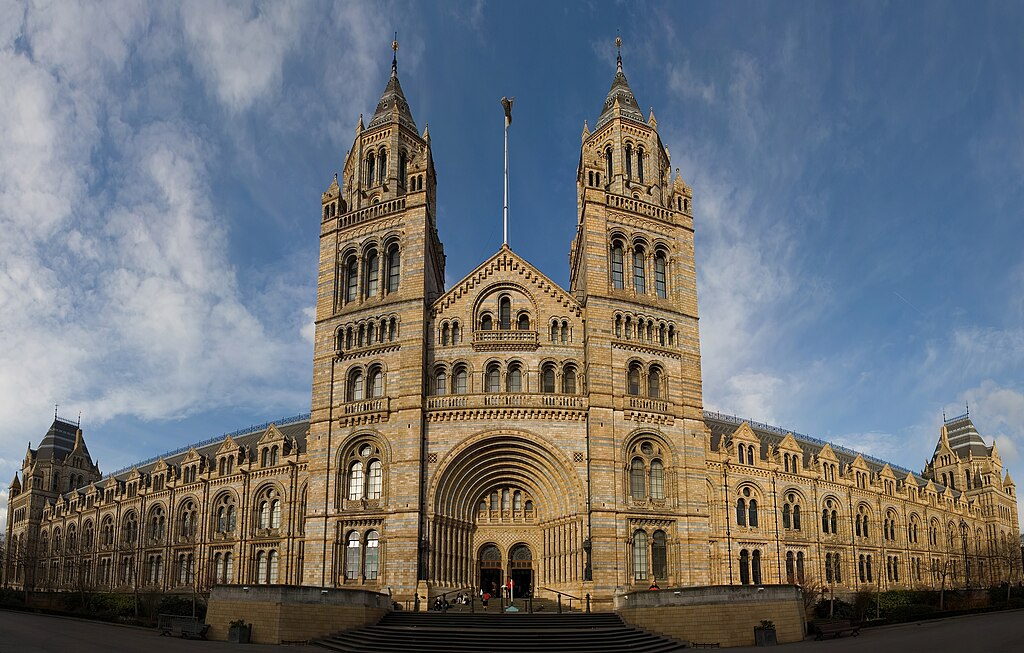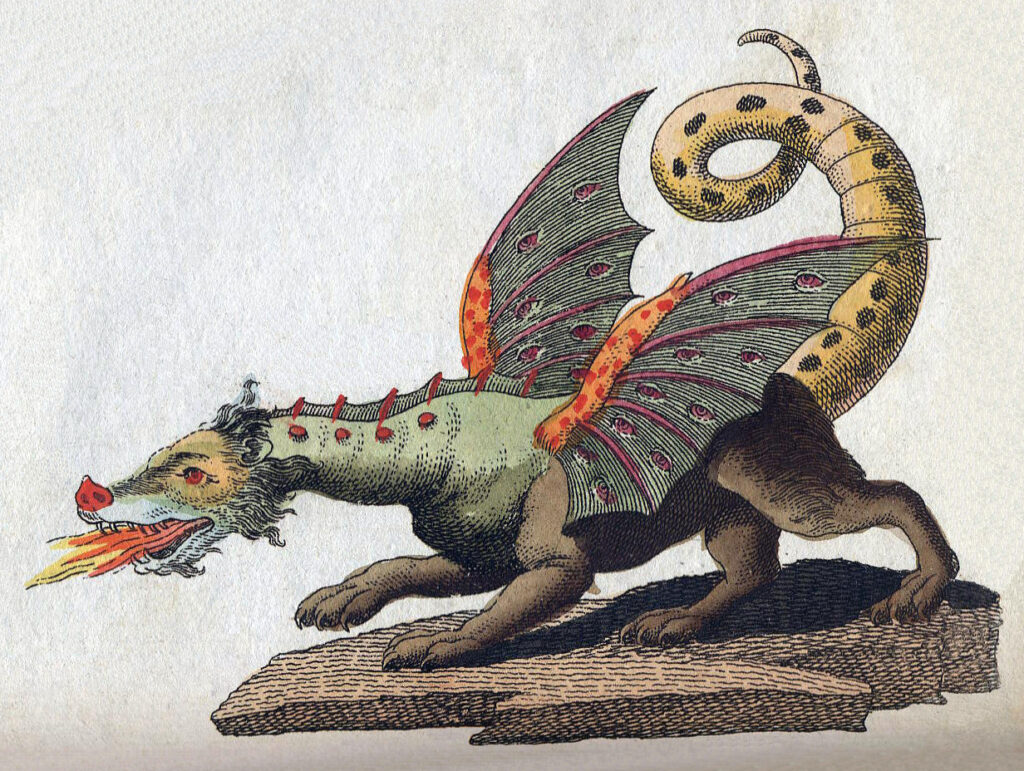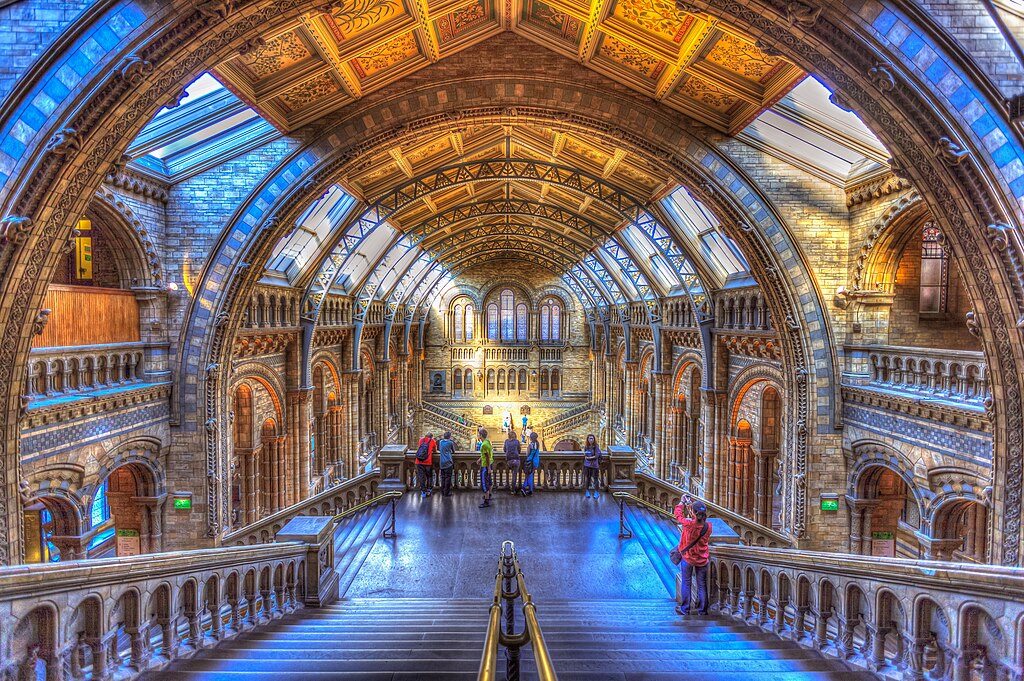Nestled in the otherworldly badlands of Alberta, Canada, the Royal Tyrrell Museum of Palaeontology stands as a testament to Earth’s ancient past. This world-renowned institution isn’t just a museum—it’s a time machine that transports visitors back millions of years to when dinosaurs ruled the planet. Located in Drumheller, a town that proudly calls itself the “Dinosaur Capital of the World,” the Royal Tyrrell Museum has earned its nickname as a “Dinosaur Cathedral,” where visitors come to worship at the altar of paleontological wonders. With its stunning architecture that seems to emerge organically from the surrounding badlands, its unparalleled collection of fossils, and its innovative approach to education, the Royal Tyrrell Museum offers an experience that captivates the imagination and deepens our understanding of prehistoric life.
The Geological Wonder of Drumheller’s Badlands

Before even stepping foot inside the museum, visitors are treated to the dramatic landscape of the Canadian Badlands—a stark, eroded terrain that seems almost extraterrestrial in its appearance. These badlands were formed over millions of years through the erosive forces of water and wind, carving deep into the prairie to reveal layer upon layer of sedimentary rock. Each stratum represents a different period in Earth’s history, creating a natural timeline that paleontologists can read like the pages of a book. The museum itself is built into the side of these formations, creating a seamless transition between the natural world outside and the curated exhibitions within. This geological setting is more than just scenic backdrop—it’s an active paleontological site where new fossils continue to be discovered, making the surrounding area as scientifically significant as the specimens housed inside the museum.
The Birth of a Paleontological Powerhouse
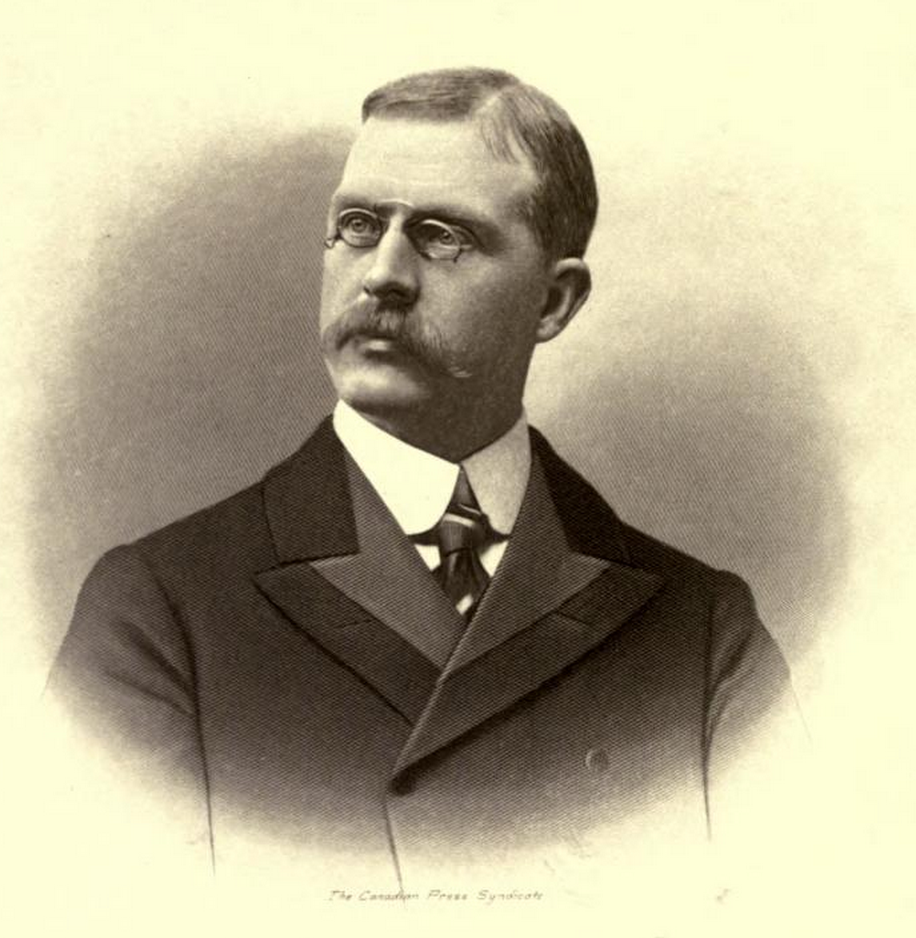
The Royal Tyrrell Museum’s story begins with a fortuitous discovery in 1884, when geologist Joseph Burr Tyrrell stumbled upon a partial skull of Albertosaurus while searching for coal deposits in the area. This finding sparked interest in the region’s fossil richness, but it wasn’t until nearly a century later, in 1985, that the museum officially opened its doors to the public. Named in honor of Tyrrell, the institution was established with a dual mandate: to serve as both a world-class research facility and an educational center accessible to the public. In the decades since its founding, the Royal Tyrrell Museum has grown into Canada’s only museum dedicated exclusively to paleontology and one of the most respected institutions of its kind globally. Its collection has expanded to include more than 160,000 specimens, with approximately 800 fossils on display at any given time, representing just a fraction of its scientific treasures.
Architectural Harmony with the Landscape
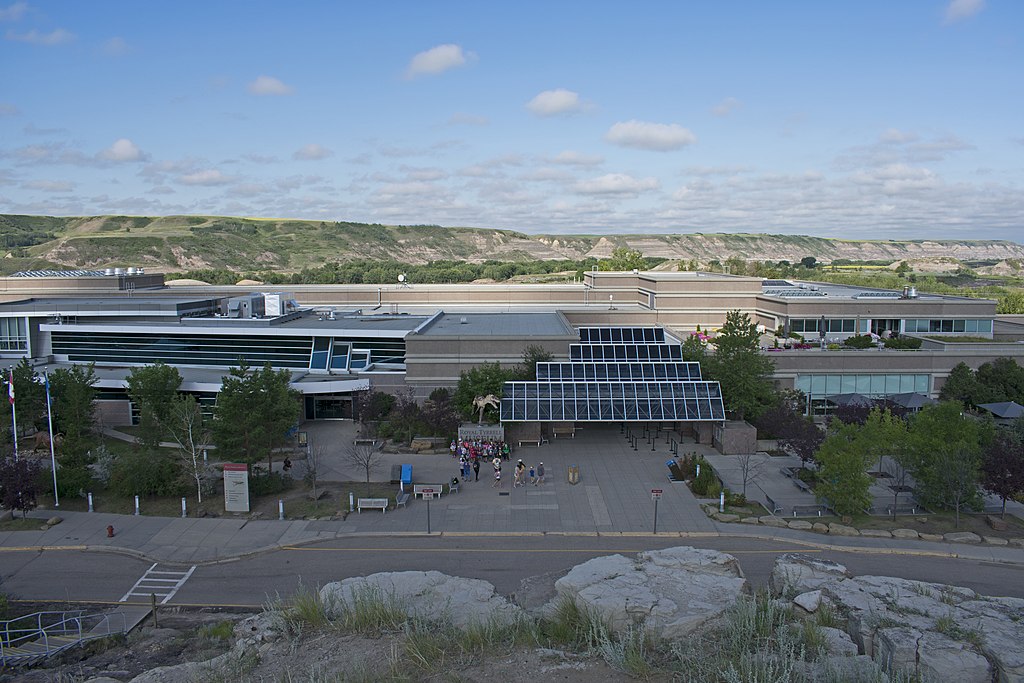
The architectural design of the Royal Tyrrell Museum deserves special mention for its thoughtful integration with the surrounding badlands environment. The building, expanded several times since its opening, features a low-profile structure that follows the natural contours of the land, with earthy tones that mirror the colors of the stratified cliffs around it. Large windows throughout the exhibition spaces frame views of the badlands, constantly reminding visitors of the connection between the fossils inside and the landscape where they were discovered. The museum’s entrance leads visitors down a sloping pathway that symbolically takes them deeper into Earth’s past, while the interior spaces are designed with high ceilings and open layouts to accommodate the massive dinosaur skeletons on display. This harmonious design approach has earned the museum architectural accolades while enhancing the visitor experience by blurring the lines between the natural and constructed environments.
The Chronological Journey Through Time

One of the Royal Tyrrell Museum’s most impressive features is its chronological approach to exhibiting Earth’s history. Rather than organizing displays by species or discovery date, the museum takes visitors on a sequential journey through the ages, beginning with the Precambrian era nearly 4.5 billion years ago and proceeding through to the relatively recent Cenozoic era. This thoughtful organization allows visitors to understand the evolution of life on Earth in context, witnessing how species emerged, diversified, and often disappeared as environments changed over time. Each gallery represents a different geological period, with appropriate lighting, soundscapes, and visual elements that create immersive atmospheres reflecting what Earth was like during those times. This chronological walkthrough culminates in the famous Dinosaur Hall, where visitors—having understood the context of these creatures’ existence—can fully appreciate the diversity and majesty of the dinosaurs that once dominated our planet.
The Crown Jewel: Dinosaur Hall
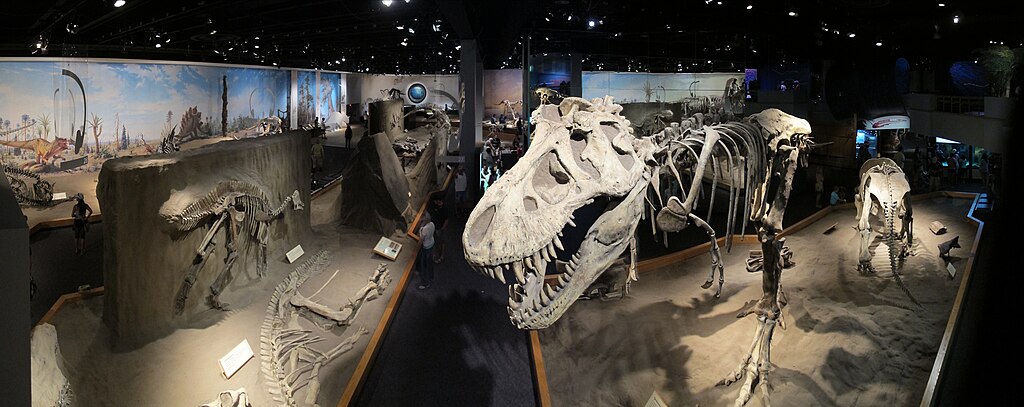
The Dinosaur Hall stands as the undisputed centerpiece of the Royal Tyrrell Museum, a vast space housing one of the world’s most impressive assemblages of dinosaur skeletons. Here, visitors come face-to-face with more than 40 mounted dinosaur specimens, including crowd favorites like Tyrannosaurus rex, Triceratops, and Stegosaurus. What sets this hall apart from similar exhibitions elsewhere is the emphasis on specimens discovered in Alberta itself, showcasing the region’s exceptional fossil record. The displays are arranged not only for dramatic effect but also to illustrate evolutionary relationships between different dinosaur groups. Particularly noteworthy is the museum’s collection of ceratopsians (horned dinosaurs), which is unrivaled globally and includes numerous species first identified from specimens found in the surrounding badlands. Each skeleton is accompanied by detailed information about the animal’s likely behavior, diet, and habitat, based on the latest paleontological research—much of it conducted by the museum’s own scientists.
Black Beauty: The Museum’s Iconic Tyrannosaurus
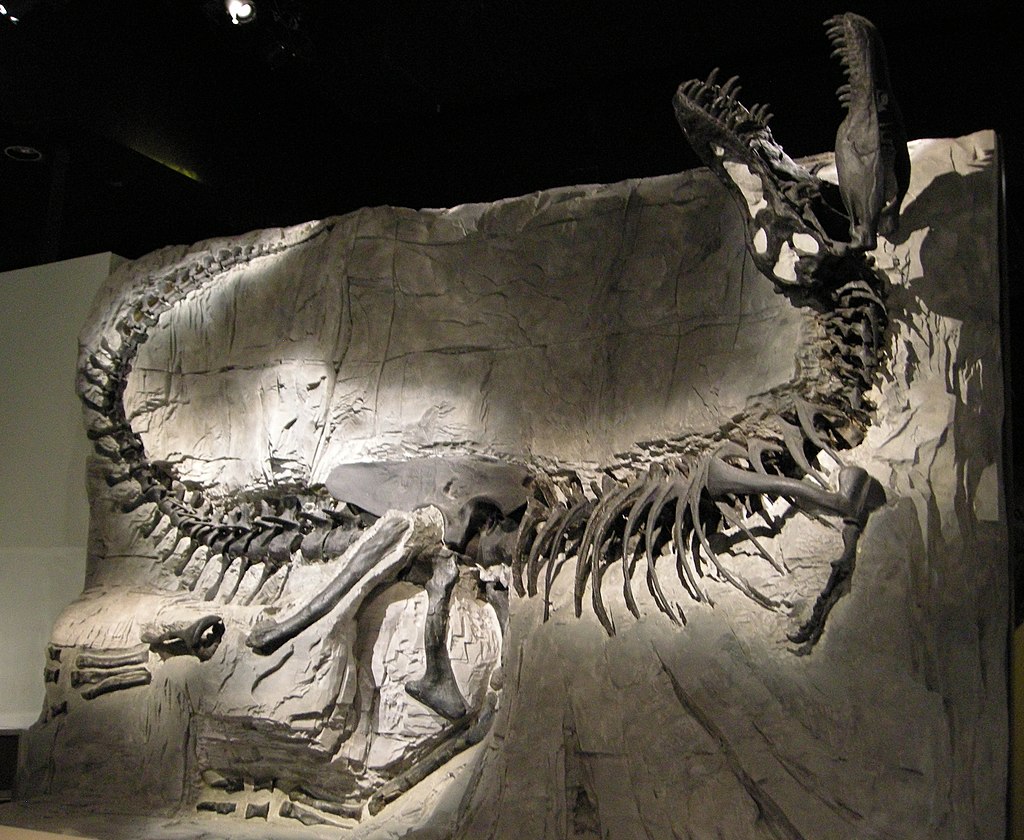
Among the many remarkable specimens at the Royal Tyrrell Museum, perhaps none commands more attention than “Black Beauty,” a stunningly preserved Tyrannosaurus rex skeleton that serves as one of the institution’s most recognizable ambassadors. Discovered in 1980 in the Crowsnest Pass area of southwestern Alberta, this specimen is nicknamed for its unusually dark fossilized bones—a result of mineral-rich groundwater that permeated the bones during fossilization. Unlike many museum displays that combine bones from multiple individuals, Black Beauty is remarkably complete, with approximately 85% of its original skeleton intact. Standing over 12 feet tall and measuring more than 40 feet from nose to tail, this imposing predator is positioned in a dynamic hunting pose that captures the power and ferocity that made T. rex the apex predator of its time. The specimen is particularly valuable to scientists because of its excellent preservation, which has allowed researchers to study fine details of bone structure and muscle attachments, contributing significantly to our understanding of tyrannosaur biomechanics and behavior.
Preservation Hall: The Art and Science of Fossil Preparation
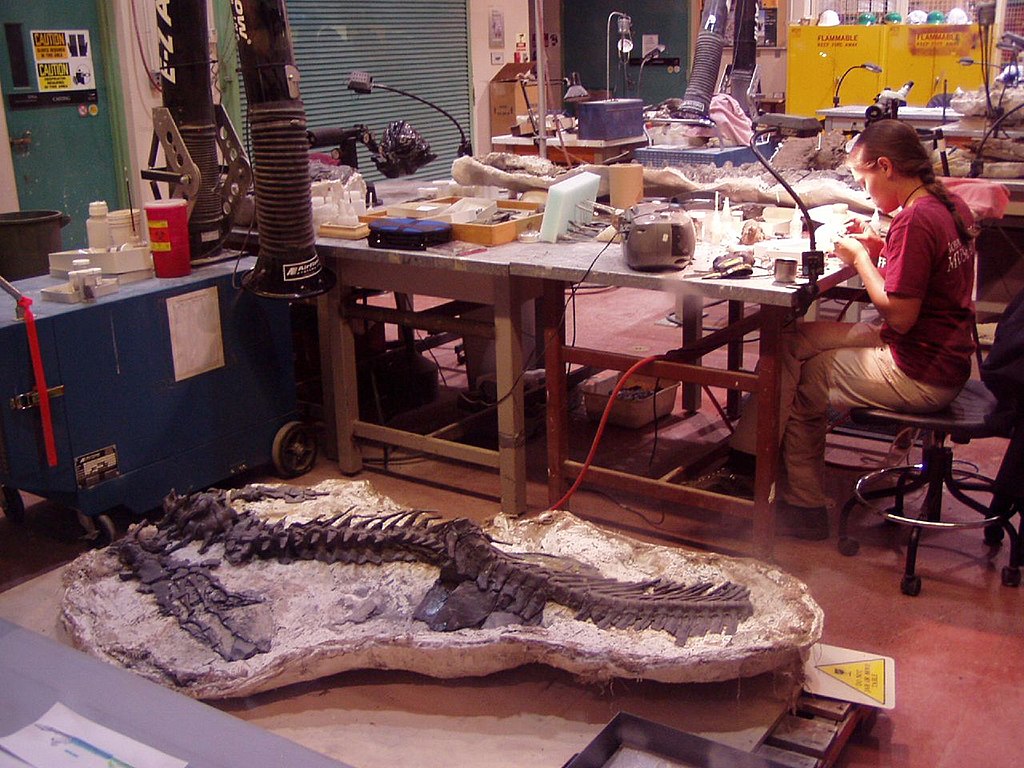
One of the Royal Tyrrell Museum’s most distinctive features is its Preparation Lab, a working laboratory with large glass windows that allow visitors to observe paleontologists and technicians as they meticulously clean and prepare newly discovered fossils. This behind-the-scenes glimpse into the painstaking work of fossil preparation demystifies the process through which specimens transition from rough rocks extracted from the field to the polished museum displays. Skilled preparators use tools ranging from dental picks and tiny pneumatic hammers to acid baths and CT scanners, depending on the fossil’s composition and condition. The work requires extraordinary patience and precision—sometimes spending months or even years on a single specimen. Museum staff regularly interact with visitors through scheduled demonstrations and Q&A sessions, explaining the techniques being used and the significance of the specimens being prepared. This transparency not only educates the public about paleontological methods but also emphasizes that the museum is an active research institution where new discoveries are constantly being processed and studied.
Beyond Dinosaurs: Discovering Prehistoric Mammals

While dinosaurs may be the main attraction for many visitors, the Royal Tyrrell Museum offers equally fascinating exhibits dedicated to the mammals that rose to prominence after the dinosaurs’ extinction. The “Grounds for Discovery” gallery highlights remarkable fossils of prehistoric mammals found in Alberta, including woolly mammoths, ancient camels, and bear-dogs that once roamed the region during the Ice Age. Particularly noteworthy is the museum’s collection of exceptionally preserved marine mammals from the Oligocene epoch, including early whales that document the transition from land to sea. These mammalian fossils tell the story of how life rebounded and diversified following the catastrophic asteroid impact that ended the Mesozoic era, demonstrating the resilience of life on Earth. The mammal exhibits also create connections to the present day, helping visitors understand how modern animals evolved from these ancient predecessors and how studying the past can inform our understanding of current biodiversity and conservation challenges.
The Burgess Shale: Window to Earth’s Ancient Oceans
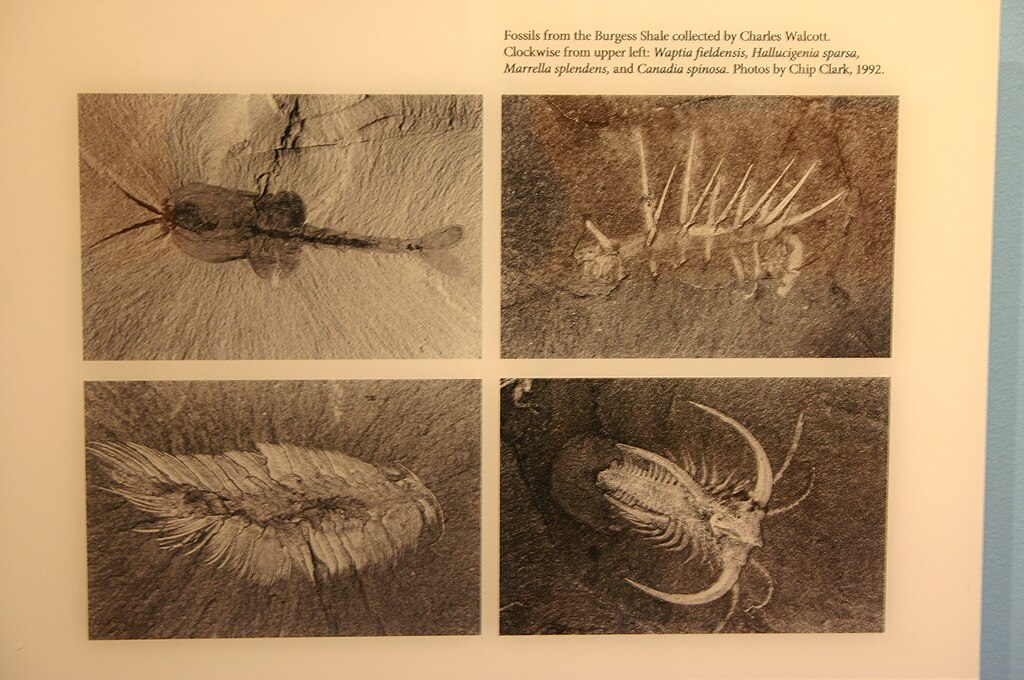
One of the Royal Tyrrell Museum’s most scientifically significant exhibitions focuses on the Burgess Shale, a fossil deposit in the Canadian Rockies that provides an unparalleled glimpse into marine life from the Cambrian period, over 500 million years ago. This UNESCO World Heritage site preserves soft-bodied organisms rarely found in the fossil record, including bizarre creatures that defy easy classification into modern taxonomic groups. The museum’s Burgess Shale exhibit features detailed models and actual specimens of animals like Anomalocaris (a fearsome predator with grasping appendages), Hallucigenia (a spiny worm-like creature once reconstructed upside-down by puzzled scientists), and Opabinia (an animal with five eyes and a flexible frontal appendage). These fossils are particularly valuable because they document the “Cambrian Explosion,” a relatively brief period when most major animal groups first appear in the fossil record. Through interactive displays and vivid reconstructions, visitors learn how these strange-looking creatures represent crucial evolutionary experiments that eventually led to the diverse animal life we see today.
Bringing Fossils to Life: The Museum’s Innovative Displays
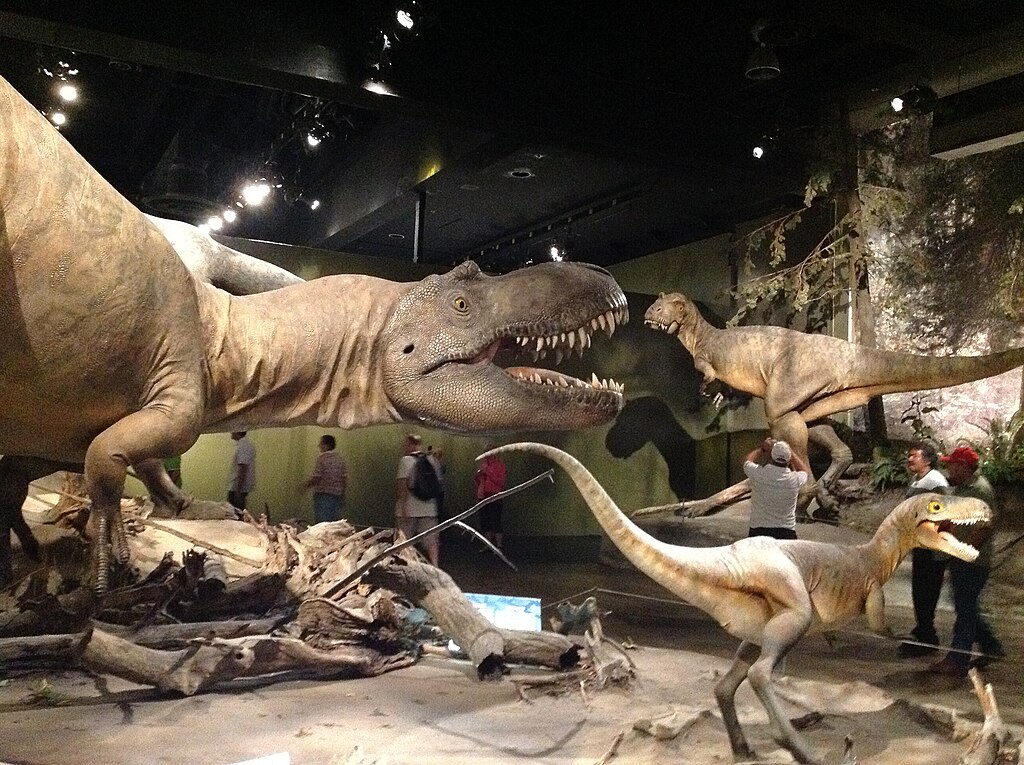
The Royal Tyrrell Museum sets itself apart through its innovative approach to fossil presentation, employing a variety of techniques to help visitors envision prehistoric creatures as living, breathing animals rather than mere stone specimens. Life-sized models with scientifically accurate skin textures, colors, and postures stand alongside skeletal mounts, showing how muscle, fat, and skin would have covered the bare bones. Animated projections bring static displays to life, demonstrating how dinosaurs might have moved, hunted, or interacted with their environments. Some exhibits incorporate soundscapes based on paleontological inferences about vocalizations, while others use subtle lighting effects to create the ambiance of ancient landscapes. Perhaps most impressive are the museum’s dioramas—meticulously researched recreations of prehistoric environments complete with authentic plant species, accurate geological features, and animals positioned in scientifically plausible behaviors. These immersive scenes, created through collaboration between artists, botanists, and paleontologists, represent the cutting edge of museum exhibition design and have influenced similar institutions worldwide.
Paleontological Research: The Science Behind the Displays
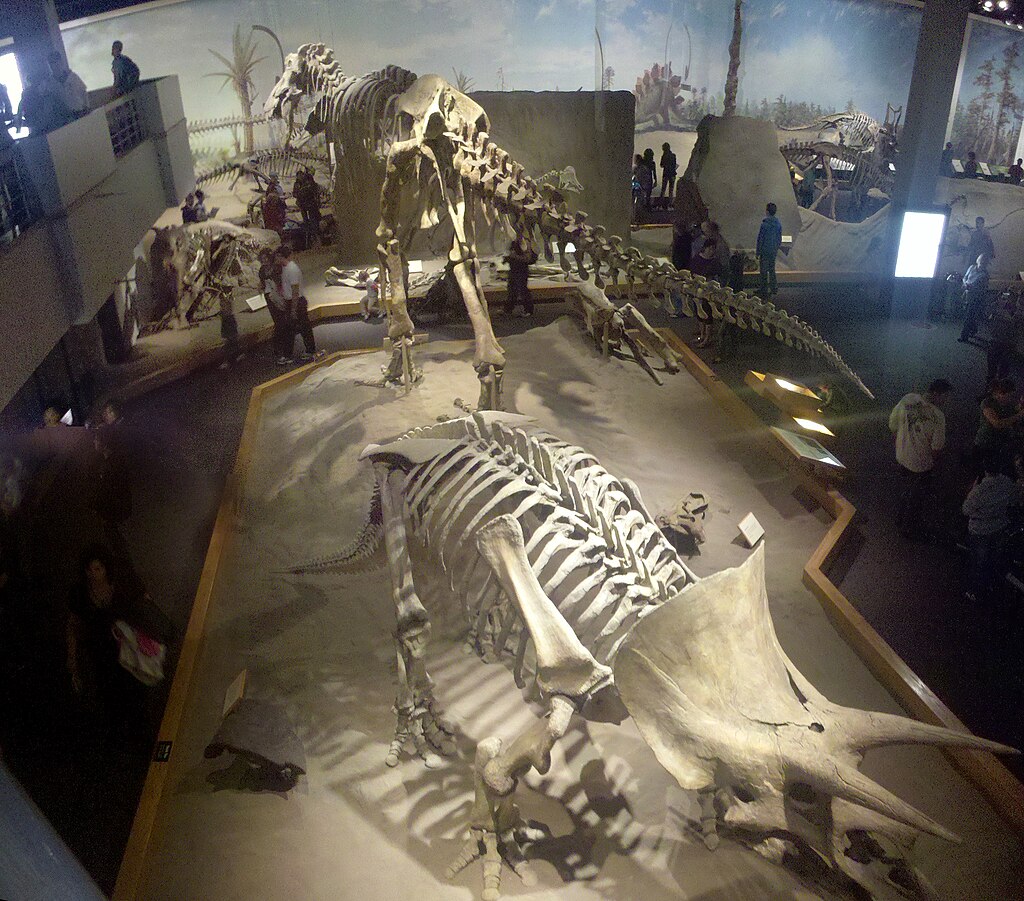
While most visitors experience the Royal Tyrrell Museum through its public exhibitions, the institution’s scientific importance extends far beyond its display halls. Behind the scenes, the museum houses extensive research facilities where paleontologists conduct groundbreaking studies on everything from dinosaur growth patterns to ancient ecosystem dynamics. The museum’s collections include thousands of specimens not on public display, carefully cataloged and preserved for scientific study. Researchers from around the world visit to examine these specimens, making the Royal Tyrrell a hub for international paleontological collaboration. The museum’s scientific staff regularly publishes in prestigious journals, describing new species and refining our understanding of prehistoric life. This research directly informs the public exhibitions, ensuring that displays reflect the most current scientific knowledge. The integration of research and education creates a virtuous cycle: new discoveries enhance the visitor experience, while public interest and support enable further scientific investigation, making the Royal Tyrrell Museum a leader in both paleontological research and public engagement with science.
Educational Programs: Inspiring the Next Generation

The Royal Tyrrell Museum excels in its commitment to education, offering a diverse array of programs designed to inspire curiosity about paleontology in visitors of all ages. School groups can participate in curriculum-aligned workshops where students might excavate replica fossils, examine real specimens under microscopes, or create paleo-art based on scientific evidence. During summer months, the museum offers popular day camps where children can experience field work at nearby dig sites under expert supervision. For adult learners, the museum provides in-depth lectures, field expedition opportunities, and hands-on workshops in fossil preparation techniques. Distance learning programs extend the museum’s educational reach globally through virtual tours and interactive online sessions with museum scientists. The institution also trains future paleontologists through internship and volunteer programs that provide valuable experience in both research and public communication of science. These educational initiatives reflect the museum’s philosophy that engaging directly with fossils and the process of paleontological discovery creates deeper, more meaningful learning experiences than passive observation alone.
The Badlands Experience: Exploring Beyond the Museum
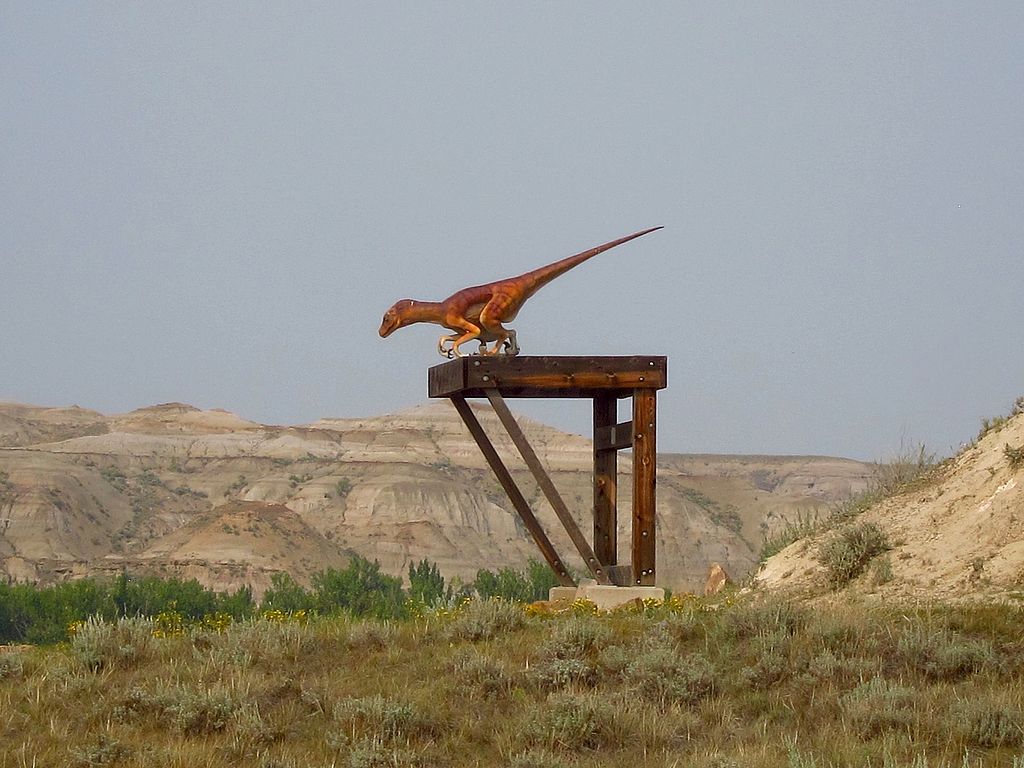
A visit to the Royal Tyrrell Museum becomes even more meaningful when combined with exploration of the surrounding Dinosaur Provincial Park and badlands region. The museum offers guided hikes through nearby fossil-rich terrain, where visitors can observe the geological context from which many of the displayed specimens originated. These interpretive walks, led by knowledgeable staff, help visitors understand how paleontologists identify potential fossil sites and the techniques used to extract specimens safely from the ground. More adventurous visitors can participate in the museum’s “Dig Experience” program, where participants spend a day at an active excavation site working alongside paleontologists. The broader Drumheller area offers complementary attractions like the world’s largest dinosaur statue (a 86-foot tall T. rex visitors can climb inside), scenic driving routes through the badlands, and the historic Atlas Coal Mine. This integration of museum visit with landscape exploration creates a comprehensive experience that connects the fossils on display with their natural environment, deepening visitors’ appreciation for both the specimens and the scientific process that brings them to light.
Planning Your Visit: Making the Most of Dinosaur Cathedral
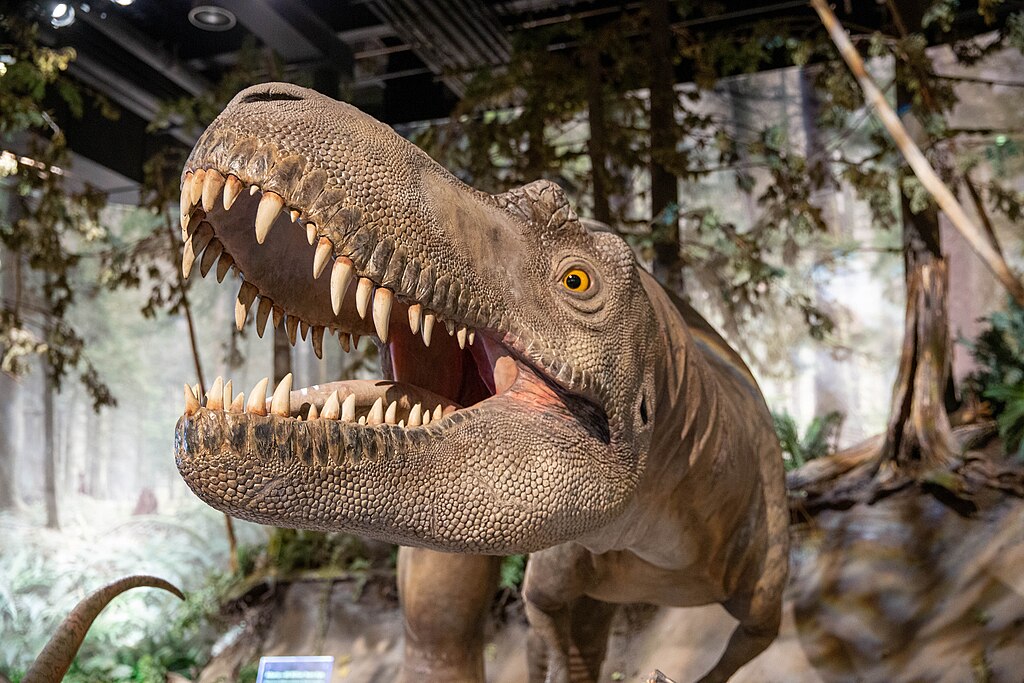
To fully appreciate the Royal Tyrrell Museum’s offerings, visitors should plan to spend at least a full day exploring the exhibits and surrounding area. The museum is open year-round, with extended hours during summer months when visitor numbers peak. While the institution is accessible to casual visitors with no prior knowledge of paleontology, those seeking a deeper experience should consider booking guided tours, which provide expert commentary and behind-the-scenes access to areas not normally open to the public. Photography is permitted throughout most of the museum, though tripods may be restricted during busy periods. The facility includes a well-stocked gift shop with scientifically accurate merchandise, educational materials, and unique souvenirs, along with a café offering refreshments. Visitors with mobility concerns will find the museum fully accessible, with ramps and elevators throughout. For those planning to combine their museum visit with badlands exploration, comfortable walking shoes and weather-appropriate clothing are essential, as Alberta’s climate can be unpredictable. Regardless of when you visit or how much time you spend, the Royal Tyrrell Museum delivers an experience that transforms how you view Earth’s history, making it truly deserving of its reputation as a cathedral to the wonders of prehistoric life.
The Royal Tyrrell Museum stands as a remarkable testament to both the wonders of prehistoric life and humanity’s enduring fascination with uncovering our planet’s past. More than just a collection of old bones, it represents a dynamic intersection of scientific research, innovative education, and immersive storytelling that brings ancient worlds back to life. Whether you’re a dedicated paleontology enthusiast or simply someone curious about Earth’s incredible history, this “Dinosaur Cathedral” offers revelations that can change your perspective on the vast timeline of life on our planet. As you walk among the towering skeletons of creatures that dominated Earth for millions of years, it’s impossible not to feel a profound connection to the deep past and a renewed appreciation for the scientific endeavor that helps us understand it. The Royal Tyrrell Museum doesn’t just preserve fossils—it preserves our sense of wonder.

